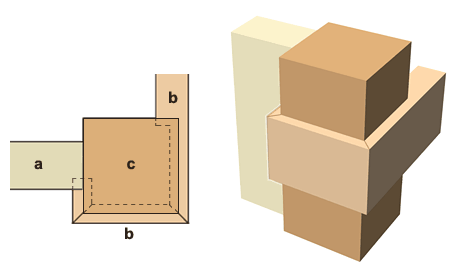|
||
 |
||

(C)2001 Japanese Architecture and Art Net Users System. No reproduction or republication without written permission.
掲載のテキスト・写真・イラストなど、全てのコンテンツの無断複製・転載を禁じます。
|
||||||
| makurasabaki 枕捌 | ||||||
| KEY WORD : architecture / general terms | ||||||
| Also called makurabasami 枕挟 or makurabakama 枕袴. The non-penetrating tie beams *nageshi 長押, that normally surround a post or pillar on three sides. However, the term makurasabaki is employed when the tie beam is mitered at each turn, the parts are held by splines *chigiri 千切, and it surrounds the pillar but stops when it abuts a beam attached to a pillar. This arrangement is called makiurasabaki 巻裏捌. A method thought to be less than first class consists of the tie beam which wraps around only two sides of the pillar. The single, mitred corner is held by a spline and the continuing part of the tie beam ends at the beginning of the chamfer and is attached by a joint. This gives the impression of being incomplete and is called katasabaki 片捌 (one-side management). The simplest example occurs when the tie beams stops before the corner chamfer and is attached by a joint. It is called hinadome 雛留. The wrap-around methods are used for example at Houryuuji Touin Denpoudou 法隆寺東院伝法堂 (early 8c), Nara. The latter two types are used on the rear posts of alcoves *tokonoma 床の間. | ||||||
 |
||||||
| REFERENCES: | ||||||
| EXTERNAL LINKS: | ||||||
| NOTES: | ||||||
(C)2001 Japanese Architecture and Art Net Users System. No reproduction or republication without written permission. 掲載のテキスト・写真・イラストなど、全てのコンテンツの無断複製・転載を禁じます。 |
||||||